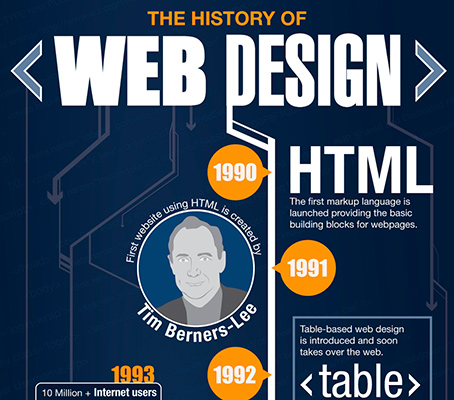The Development Of Website Design: Then And Currently
The Development Of Website Design: Then And Currently
Blog Article
Content Written By-Rasmussen Clarke
In the past, websites were basic and concentrated on details. Navigating was straight, and design was for desktops. Currently, individual experience is crucial. Information guides designs for simple navigating. Responsive designs fit different tools. Today, dark setting decreases pressure, and minimalist menus enhance navigation. Interactive attributes engage customers, and bold visuals stick out. AI assimilation boosts involvement. See how style has actually advanced to enhance your online journey.
Very Early Days of Website Design
In the very early days of web design, simplicity reigned supreme. Web sites were fundamental, with restricted shades, fonts, and designs. The emphasis was on supplying information instead of flashy visuals. Individuals accessed the internet via slow dial-up links, so rate and capability were crucial.
Navigation food selections were straightforward, commonly located at the top or side of the web page. Internet sites were created for desktop, as mobile surfing had not been yet prevalent. Material was king, and designers focused on easy readability over intricate style components.
HTML was the primary coding language made use of, and developers needed to work within its constraints. Computer animations and interactive functions were marginal compared to today's criteria. Web sites were fixed, with little vibrant content or tailored individual experiences.
Surge of User-Focused Layout
With the development of internet site design, a change in the direction of user-focused layout principles has ended up being significantly popular. Today, producing websites that prioritize customer experience is critical for engaging visitors and achieving service objectives. User-focused style includes understanding the requirements, choices, and habits of your target market to customize the website's format, content, and includes appropriately.
Developers now perform detailed research study, such as user surveys and usability screening, to collect insights and comments straight from customers. This data-driven strategy assists in producing intuitive navigation, clear calls-to-action, and visually enticing interfaces that reverberate with visitors. By placing the customer at the center of the style process, websites can supply a more customized and enjoyable experience.
Receptive design has additionally become a crucial element of user-focused style, making certain that sites are maximized for numerous devices and screen dimensions. This adaptability boosts availability and use, accommodating the varied methods customers connect with websites today. Basically, the increase of user-focused design indicates a change towards developing electronic experiences that focus on the requirements and assumptions of completion individual.
Modern Trends in Web Design
Check out the most recent fads shaping website design today. One noticeable trend is dark setting design, using a smooth and modern-day look while lowering eye stress in low-light atmospheres. An additional vital pattern is minimalist navigating, simplifying menus and enhancing user experience by concentrating on essential elements. Incorporating micro-interactions, such as computer animated buttons or scrolling impacts, can create a more interesting and interactive internet site. Responsive layout remains essential, ensuring seamless customer experiences across numerous devices. Additionally, utilizing strong typography and unbalanced formats can include aesthetic interest and accentuate certain material.
Incorporating AI modern technology, like chatbots for consumer assistance or individualized recommendations, boosts individual engagement and enhances procedures. Availability has additionally end up being a significant fad, with developers prioritizing comprehensive style methods to deal with varied customer requirements. Welcoming sustainability by enhancing internet site performance for rate and efficiency is an additional arising pattern in website design. Working together with customer responses and data analytics to repeat and enhance style continuously is vital for remaining pertinent in the ever-evolving digital landscape. By embracing these contemporary patterns, you can develop an aesthetically attractive, easy to use internet site that reverberates with your target market.
Final thought
As you assess the advancement of website layout from the early days to now, you can see just how user-focused design has actually come to be the driving force behind modern-day fads.
Accept https://www.searchenginejournal.com/local-seo-tips-serps-map-pack/397587/ of change and adjustment in web design, always keeping the customer experience at the center.
Tippingpointdigital
Stay present with the most up to date patterns and modern technologies, and never ever stop developing your approach to develop aesthetically magnificent and straightforward websites.
Progress, adjust, and produce - the future of web design is in your hands.
